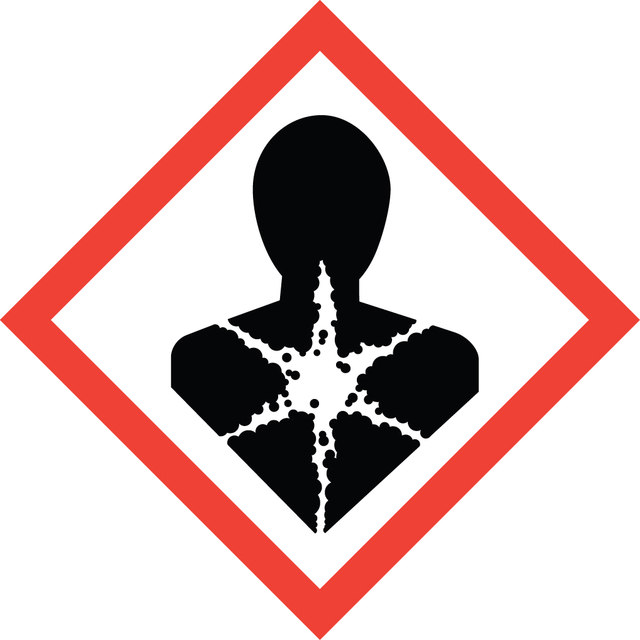biological source
human
recombinant
expressed in Sf21 cells
tag
His tagged
Assay
>95% (SDS-PAGE)
form
liquid
mol wt
~110 kDa by SDS-PAGE
packaging
pkg of 2 μg
concentration
≥0.2 mg/mL
technique(s)
cell based assay: suitable
color
clear
solubility
water: soluble
UniProt accession no.
shipped in
dry ice
storage temp.
−70°C
Gene Information
human ... PARG(8505)
General description
Research area: Cell signaling
Application
PARG human has been used in the digestion of sciatic nerve sections, in co-immunoprecipitation, in in vitro glycohydrolase activity assay
Biochem/physiol Actions
Poly(ADP-ribose) glycohydrolase(PARG) hydrolyzes poly(ADP-ribose) at glycosidic(1′′-2′′) linkage of ribose-ribose bond to produce free ADP-ribose. It is an endo- and exo-glycosidase. PARG plays arole in DNA repair and replication. Inhibited or depleted PARG in cells aremore prone to DNA-damaging agents. PARG also averts the accumulation of PAR inthe cytoplasm and parthanatos, a caspase-independent PAR-mediated type of celldeath.
Physical form
Solution in 50 mM TRIS-HCl, pH 7.5, containing 100 mM sodium chloride, 0.2% NP-40, 50 mM imidazole and 10% glycerol.
Other Notes
Human PARG is fused to a His-tag.
Signal Word
Danger
Hazard Statements
Precautionary Statements
Hazard Classifications
Repr. 1B
Storage Class Code
6.1D - Non-combustible acute toxic Cat.3 / toxic hazardous materials or hazardous materials causing chronic effects
WGK
WGK 1
Flash Point(F)
Not applicable
Flash Point(C)
Not applicable
Regulatory Information
常规特殊物品
This item has
Choose from one of the most recent versions:
Already Own This Product?
Find documentation for the products that you have recently purchased in the Document Library.
Daniel Harrision et al.
Frontiers in molecular biosciences, 7, 191-191 (2020-10-03)
Poly(ADP-ribose) polymerases (PARPs) are a family of enzymes that catalyze the addition of poly(ADP-ribose) (PAR) subunits onto themselves and other acceptor proteins. PARPs are known to function in a large range of cellular processes including DNA repair, DNA replication, transcription
Sara C Larsen et al.
Cell reports, 24(9), 2493-2505 (2018-08-30)
ADP-ribosylation (ADPr) is a reversible posttranslational modification involved in a range of cellular processes. Here, we report system-wide identification of serine ADPr in human cells upon oxidative stress. High-resolution mass spectrometry and unrestricted data processing confirm that serine residues are
Jeannette Abplanalp et al.
Nature communications, 8(1), 2055-2055 (2017-12-14)
ADP-ribosylation is a posttranslational modification that exists in monomeric and polymeric forms. Whereas the writers (e.g. ARTD1/PARP1) and erasers (e.g. PARG, ARH3) of poly-ADP-ribosylation (PARylation) are relatively well described, the enzymes involved in mono-ADP-ribosylation (MARylation) have been less well investigated.
Sara C Buch-Larsen et al.
Cell reports, 32(12), 108176-108176 (2020-09-24)
ADP-ribosylation (ADPr) is a post-translational modification that plays pivotal roles in a wide range of cellular processes. Mass spectrometry (MS)-based analysis of ADPr under physiological conditions, without relying on genetic or chemical perturbation, has been hindered by technical limitations. Here
Yongjia Duan et al.
Cell research, 29(3), 233-247 (2019-02-08)
Mutations in RNA-binding proteins (RBPs) localized in ribonucleoprotein (RNP) granules, such as hnRNP A1 and TDP-43, promote aberrant protein aggregation, which is a pathological hallmark of various neurodegenerative diseases, such as amyotrophic lateral sclerosis (ALS) and frontotemporal dementia (FTD). Protein
Our team of scientists has experience in all areas of research including Life Science, Material Science, Chemical Synthesis, Chromatography, Analytical and many others.
Contact Technical Service